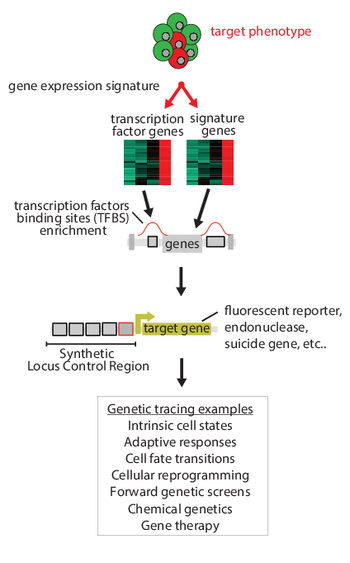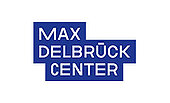Identifying Cellular States and Fate Transitions via Synthetic Locus Control Regions (sLCRs)
Challenge
Monitoring and investigating disease related processes such as inflammation and cancer, requires deciphering complex cellular states. A bottleneck in this regard is the limited availability of genetic reporter systems reflecting intricate cellular states. For a first assessment, this topic may be addressed by studying the expression of a single gene or the binding site of a single transcription factor, however, this approach fails to reflect complex development or disease settings. To date, no technology is available to incorporate complex cellular identities to in vitro/ex vivo applications such as drug screening, diagnosis or therapy monitoring.
Technology
Application of synthetic Locus Control Regions (sLCRs) enables to genetically label any cell state and identify changes, such as the transition of epithelial cells to mesenchymal cells, which are known to be critically different tumor states with unique therapeutic vulnerabilities. The invention builds on two major steps: 1. Identification of cell type specific cis-regulatory elements; 2. Generation of a synthetic cis-element reflecting the signaling of specific cell states. Both operations are executed by newly developed software. The input for the software is a differential gene expression profile, which is converted into a synthetic cis-regulatory element that drives the expression of a gene. The gene can be a reporter to perform genetic cell tracing or an effector to perform other actions. The described reporters can be flexibly generated for different cell types and therefore offer a wide range of applications based on the identification of a cell type, state or development status. It can be applied to diagnostics, e.g. to determine a type of cancer or its progression, to assess the effectiveness of therapies or to test or screen alternative drugs or combinations. Moreover, it can be employed to perform forward genetics and to study disease mechanisms.
Commercial Opportunity
sLCR-technology is ready for application in diagnosis, drug discovery and basic research. This opportunity is available for research collaborations and/or licensing.
Development Status
sLCR-technology has been successfully applied in monitoring cell state transitions and in drug screening with different cancer cell types. sLCRs for SARS-2-CoV infection have been designed; the generation of a validated toolkit, based on ready-to-use sLCR-reporter cell lines and defined cell culture media is in progress.
Patent Situation
Patent applications with priority of 2018 are pending in EP, US, CA, CN and JP (based on WO2020/049106).
Further Reading
Schmitt MJ et al. Cancer Discov. 2021;11(3):754-777. doi:10.1158/2159-8290.CD-20-0219
Jiang B et al. Sci. Adv. 2023; 9 (25), eadf4975. doi:10.1126/sciadv.adf4975





